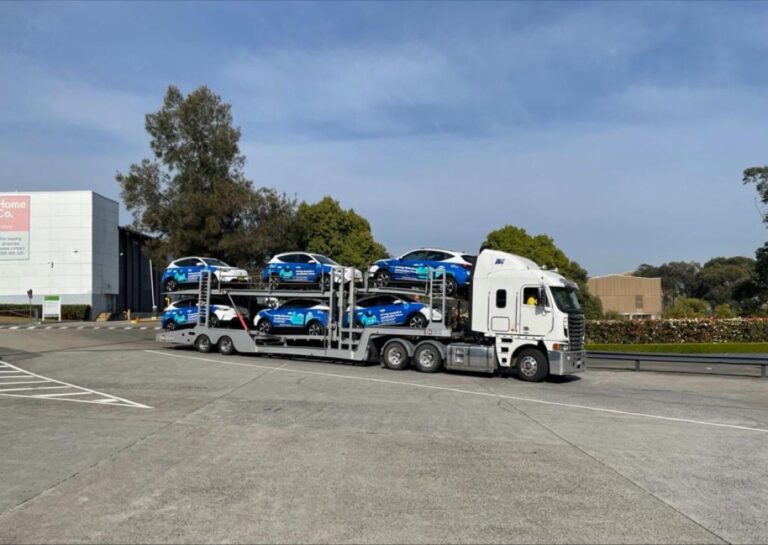The journey towards a more sustainable future is often marked by bold decisions and strategic partnerships. This was evident in a recent interview with David Helmy from Origin 360EV and John Little from Sydney Water. Sydney Water, with the assistance of Origin 360EV, has made significant strides in transitioning their fleet to electric vehicles (EVs) an ambitious move that converted 50 vehicles in one of their pool car fleets simultaneously.
Comprehensive EV solutions
Unlike traditional fleet management organisations (FMOs) that primarily handle internal combustion engine vehicles, Origin brings a holistic approach to fleet electrification. “We’ve tried to do the heavy lifting for organisations when they transition to EVs,” Helmy explained. This involves not just providing the vehicles and chargers but also offering extensive support in areas such as energy management, charging infrastructure, and change management.
Origin’s approach is consultative. They analyse the existing fleet, identify opportunities for EV integration, and assist in building business cases that include total cost of ownership (TCO) and potential government incentives. Helmy emphasised, “It’s not just about giving the cars and the chargers. It’s also being on hand afterwards to make sure that implementation goes well and that staff members are comfortable.”
The selection process and implementation
Sydney Water’s transition began with an in-depth analysis of their fleet’s operational and economic requirements. Helmy detailed, “We were looking at their existing fleet. We’ve done the analysis. They’ve given us a fleet listing. We tried to understand the use cases and the operational requirements of the vehicles.” This analysis revealed that pool vehicles were the most suitable for electrification.
One of the critical aspects of the transition was the installation of charging infrastructure. Origin leveraged its extensive experience in electrical works to ensure a smooth implementation. “Origin’s strength lies in its background in energy. We have installers doing equivalent of 10,000 installations per annum,” Helmy noted. This expertise ensured that the infrastructure met safety guidelines and was cost-effective. Origin also implemented a load management system to prevent overloading and optimised charging schedules to reduce energy costs.
Sydney Water’s bold move
John Little shared the genesis of Sydney Water’s EV journey, which began with a cautious exploration of electric and hybrid vehicles. The turning point came when Origin approached Sydney Water with a compelling proposition that included government funding. Little recalled, “To Origin’s credit, it was almost a cold call. They tapped into the aggregation scheme and said, ‘Look, we’ll also tap into ARENA funding for your infrastructure.'”
The decision to convert 50 vehicles at once was driven by the opportunity to leverage government incentives and Origin’s support. “The government funding organised by Origin actually helped us get a lot closer to what the equivalent passenger ICE vehicle cost would be,” Little explained. This cost neutrality was critical in gaining approval from management and stakeholders.
Little’s strategy deviated from the cautious approach typically seen in other organisations. Instead of trialling a few vehicles, he opted for a wholesale switch. “What I then get is we have…over 300 pool vehicle bookings from Potts Hill a month. So what I have across 40 to 50 electric vehicles is 300 different people a month interacting with EVs,” Little said. This approach maximised exposure and feedback, accelerating the organisation’s familiarity with EV technology.
Overcoming challenges and ensuring user acceptance
The implementation was not without challenges. Though according to Little, the noise was similar to when the pool fleet was petrol vehicles.
Ensuring that vehicles were adequately charged and managing user expectations required proactive communication and support.
Little described their approach: “We did a drive day at Potts Hill where people could come out, drive the EVs, and get familiar with them.” Continuous communication and user education were essential in addressing concerns and ensuring smooth operation.
The positive feedback from users was a testament to the success of the initiative. “We’ve done a survey—80% said they’d never driven an EV before, and 85% of those people said they would do it again,” Little shared. This high level of acceptance was crucial in validating the decision to scale up the EV fleet.
The role of Origin 360EV
Origin’s role extended beyond the initial transition, providing ongoing support and exploring further opportunities for electrification. Little acknowledged the critical role played by Origin, stating, “Credit where it’s due. They kept coming with different options… Their after-sales support has been great.”
The partnership between Sydney Water and Origin exemplifies how strategic collaboration can drive substantial progress in fleet electrification. With 77 EVs now in their fleet, Sydney Water is well on its way to meeting its carbon neutrality goals, demonstrating that with the right support, large-scale transitions to sustainable practices are not only possible but also practical and economically viable.
This successful transition serves as a blueprint for other organisations aiming to reduce their carbon footprint and embrace a greener future. Through comprehensive planning, robust infrastructure, and strategic partnerships, the road to sustainability becomes clearer and more achievable.






